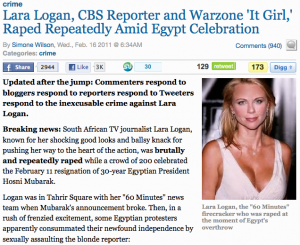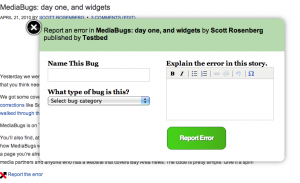In a Feb. 24 column on FoxNews.com, Juan Williams rebuked the Washington Post for downplaying a poll measuring the views of blacks and Latinos on the recession. The poll, which the Post itself helped produce, showed those groups were more optimistic than whites about the U.S. economy despite being hit harder in the downturn. According to Williams, the Post’s poll coverage “did not make its front page” but instead was “buried” in the business section. This was typical, Williams said, of “big media’s inability to report on good news when it comes to life among people of color.”
The purpose of the column was to mount a case against unjust media, with the Post’s deficient poll coverage as Exhibit A. Williams worked his way up to a racially fraught finish:
If there is a story about black poverty, police brutality or a drug-related shooting spree in a Hispanic neighborhood, the big papers will feature it with Page One coverage. Those stories fit old racial stereotypes. And lots of old line civil rights groups and liberal cocktail party people will applaud those papers for any story about racial minorities’ complaints about life in America or stories confirming that life is bad, unjust and oppressive for people of color.
But when there is good news on race relations and refreshing evidence of blacks and Latinos leading the way by showing faith in America’s future, the big media is just not that into it.
That patronizing attitude amounts to prejudice. It is condescending and says more about the old racial attitudes holding back the big, white press than any racism holding back blacks and Latinos in modern America.
 There’s one little problem with Williams’ complaint: The Washington Post hardly buried its poll. In fact, as an error report at MediaBugs details, it ran an in-depth story about its findings on the front page of the Sunday, Feb. 20 print edition — replete with a large, sunny photo illustration and oversized headline. The Post also produced an extensive multimedia package around the story on its website.
There’s one little problem with Williams’ complaint: The Washington Post hardly buried its poll. In fact, as an error report at MediaBugs details, it ran an in-depth story about its findings on the front page of the Sunday, Feb. 20 print edition — replete with a large, sunny photo illustration and oversized headline. The Post also produced an extensive multimedia package around the story on its website.
In other words, as the person who submitted the error report put it, “the entire premise of his column was incorrect.”
Williams’ blunder isn’t just embarrassing for how carelessly he flogged his apparently predetermined argument. (How could he have missed the striking A1 spread or multimedia Web package? Did he stop reading the Post altogether despite having worked there himself for more than two decades?) Equally undignified is that Williams and Fox News have ignored attempts by the public to alert them to the problem and get the record corrected.
For our part, MediaBugs tried multiple times to contact Fox News via email and Twitter since March 15. The generic address provided with FoxNews.com’s “Email Newsroom” link (newsmanager@foxnews.com) apparently isn’t effective. We have yet to get any response.
The lack of one may in part be due to the fact that Fox News has no accessible corrections info or content on its website, as we reported in our recently published study of online corrections practices across U.S. media. The news honchos at Fox might consider an approach more like the one at NPR, where Williams recently was ousted for a different prejudicial tangle. Fox may regard its newsroom as “fair and balanced” — but apparently it’s also totally inaccessible to an audience concerned with factual accuracy.
There’s some chance, once this post circulates, that Williams and Fox News will take notice of some unflattering attention and fix the piece. Better late than never. With our work at MediaBugs we’ve seen more than one case in which a long chase and critical coverage have proven necessary to motivate a response.
In the flourishing age of interactive news, it shouldn’t have to be that way. Terrific tools already exist for better communication and greater transparency. Perhaps only ideology, or just plain laziness, now stands in the way.
 Report an error
Report an error




